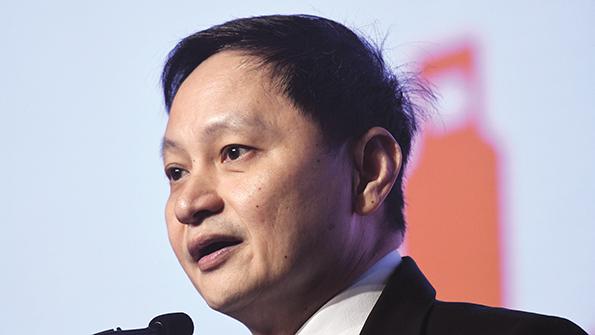
It’s my great pleasure to congratulate you and Singapore Airlines (SIA) on being the 2023 ATW Airline of the Year. It is very well-deserved. What was your reaction when when we revealed that you had been selected? It’s really exciting. I mean, this is one of the most prestigious awards in the airline industry. We are both honored and very proud to be given this accolade, especially when the industry as a whole is just recovering from a devastating pandemic impact. It is a great recognition for the resilience and the indomitable spirit of the SIA people. It is also a great endorsement of the strategic decisions that we have made during and through the pandemic, which has allowed us to emerge stronger and to remain as one of the leading carriers in the world. I would also like to take this opportunity to express our deep appreciation for our very, very supportive customers, our shareholders, and other partners in the aviation industry.
When the pandemic first really hit and you could see the severity of this, what was your team’s initial thoughts and plans, and how did things change here at Singapore Airlines? It was indeed a very difficult time. Also, because Singapore Airlines does not operate any domestic flights, we don’t have a domestic market. Everything is international, so when the international borders began to close in quick succession, we found that we were unable to operate to most of our destinations. At its worst, we were operating only about 3% of the pre-COVID capacity and carrying maybe 10,000 to 11,000 people per month compared with 3.4 million. We were also burning 300 to 400 million Singapore dollars ($230-$300 million) in cash every month, so one immediate priority was to raise cash. We were fortunate that we have very supportive shareholders who came in and supported us to help raise the S$15 billion in terms of funding. And with that as a foundation, we were able to go further and raise another S$7.2 billion, for a total of S$22.4 billion. At the same time, we reached out to aircraft manufacturers and suppliers to defer aircraft deliveries and payment. We were getting our staff also to contribute; pay cuts started with management, but everybody participated and shared the sacrifice.
You’ve recently posted a record revenue and profit. Scoot, the wholly owned low-cost subsidiary, is similarly having a great performance. What were the key enablers to that turnaround? It’s really because we had the resources ready to operate and to meet the pent-up demand when borders were opened. And the key reason for that was because we were able to mobilize core resources, aircraft and people that we retained even during the worst of the pandemic. And what that means is that whenever there was an additional opening in the border, we were able to put those resources to meet demand right away.
You always had faith that the travel demand would come back? That is true. While we didn’t know when it would come back, we knew that the demand had always been there. We had been engaging with our customers, even though they were not flying with us, and they told us of their desire to travel and continue to support us.
What are your focus areas now? We were also looking at what needs to be done, some of the strategic initiatives that we will want to continue to push, that would support the SIA group’s growth and new opportunities beyond the recovery period. An example is our involvement with Tata Group in the Air India deal. We intend to work with Tata and allow Vistara to be merged into Air India, and in return, with some additional cash payment, to get 25.1% of Air India. India is a huge market and it is a fast-growing market. It is already the third-biggest travel market in the world. It is expected to double in size in 10 years. So it is an important growth engine for the future of SIA. Similarly, Scoot’s initiative to lease the Embraer E2 airplanes, nine of them, will allow us to expand our footprint to secondary points in the region and provide even greater connectivity for our customers.
How important is IT and digitalization? It is an important strategic initiative to make Singapore Airlines one of the most digital airlines in the world. Everyone at SIA is able to acquire a digital mindset and culture. It’s about getting people more comfortable with digital tools, building our own digital talents and recognizing that we don’t have all the solutions ourselves, so we need to use other partners and startups.
How do you define leadership? Singapore Airlines has a very strong team. And while I have the privilege of leading this team, a lot of the decisions, especially with regard to strategic initiatives, are very well debated. And we harness the strength of all the participants or individuals to arrive at an approach that would best benefit the airlines, especially in the longer run. It is not just an individual; it is really the team coming together and providing an outlook for the airline that is going to be stronger than ever before. We will continue to develop this deep bench that we have. However, I would add that the most important aspects of this is not just getting the plan right, it’s about execution, and execution will depend on our people. And we are fortunate to have people who are dedicated, who are innovative, who are agile, who are resilient. And really, that is what makes Singapore Airlines what it is today and what will ensure that we continue to be successful in the future.
Interview by Karen Walker. Listen to the full interview in our Window Seat podcast.





